Wi-Fi 6 Speed Capabilities: The Next Generation of Wireless
2024-09-19
1116
Catalog

Figure 1: Wi-Fi 6
Introduction to Wi-Fi 6
Wi-Fi technology has evolved over time, with each new version improving how devices connect and share data. Wi-Fi 6, also known by its technical name 802.11ax, represents the latest advancement in this technology.
Launched with an official certification on September 16, 2019, Wi-Fi 6 brings a considerable boost to data transfer speeds, with rates that can reach several gigabits per second. In many cases, Wi-Fi 6 can match or even outperform traditional wired internet connections. This is achieved through better data encoding methods, allowing for faster and more efficient transmission of information. Wi-Fi 6 uses larger data packets, which makes the network faster and more stable, even when many devices are connected at the same time.
In 2020, Qualcomm introduced Wi-Fi 6E, an extension of Wi-Fi 6 that supports the 6 GHz frequency band. This new band adds more "room" for Wi-Fi signals, reducing interference from other devices that might slow down the connection. This additional spectrum is especially important in crowded environments where many devices are competing for bandwidth. By using the 6 GHz band, Wi-Fi 6E ensures that each device can maintain a stable, high-speed connection without interruptions.
Performance Capabilities of Wi-Fi 6
Wi-Fi 6 is capable of reaching theoretical speeds as high as 9.6 Gbps, a substantial improvement over Wi-Fi 5's 3.5 Gbps. These maximum speeds are achievable only under ideal conditions, which rarely occur in everyday settings. In special applications, the speeds most users experience are much lower. For example, the average download speed in the U.S. is around 72 Mbps, far below Wi-Fi 6's theoretical limit. This difference between potential and actual speeds shows that in typical usage, the full speed capabilities of Wi-Fi 6 aren't always put to use.
The advantage of Wi-Fi 6 is not just about speed, but in how it handles multiple devices at the same time. Technologies like Orthogonal Frequency-Division Multiple Access (OFDMA) and Multi-User, Multiple Input, Multiple Output (MU-MIMO) make Wi-Fi 6 excel in busy environments. These technologies allow Wi-Fi 6 to divide its bandwidth more efficiently across many devices, ensuring that each device gets the data it needs without causing slowdowns for others. This prevents the network congestion often seen with older Wi-Fi standards.
For users, this means that activities like streaming HD video, playing online games, and downloading large files can all happen at once, across several devices, without reducing the quality or speed of each connection.

Figure 2: Wi-Fi 6 Latest Speed Test
Speed and Efficiency: Features of Wi-Fi 6
Wi-Fi 6 considerably improves network performance by using advanced technologies like Multi-User, Multiple Input, Multiple Output (MU-MIMO) and Orthogonal Frequency Division Multiple Access (OFDMA). These innovations change the way data is handled across networks, resulting in faster speeds and more efficient operation.
With MU-MIMO, a Wi-Fi 6 router can communicate with up to eight devices at the same time. In contrast, Wi-Fi 5 could only manage four devices simultaneously. This improvement is especially important in homes or offices with many devices connected at once, such as phones, tablets, laptops, and smart TVs. By doubling the number of devices it can manage, Wi-Fi 6 reduces the wait times for data to be sent or received. This eliminates data queues, providing a smoother and more responsive experience for users, even in busy environments.
OFDMA complements this by breaking down a single Wi-Fi channel into smaller sub-channels, allowing multiple devices to transmit and receive data at the same time. A good analogy is a delivery truck making multiple stops on one trip, efficiently delivering data packets to different devices in a single cycle. This method avoids unexpected delays, reduces latency, and makes better use of network resources, leading to faster and more responsive interactions with devices.
Together, MU-MIMO and OFDMA not only boost the raw speed of Wi-Fi networks but also make them much more efficient in how they handle multiple devices. For users, this translates to fewer interruptions, less buffering, and minimal lag, even when several devices are connected and demanding high bandwidth. Whether you're streaming HD videos, playing online games, or joining video calls, Wi-Fi 6 ensures each device gets the data it needs without slowing down. This makes it a powerful solution for homes and workplaces where multiple devices often compete for bandwidth.
Advances Over Previous Wi-Fi Generations

Figure 3: Improvements from Previous Wi-Fi Versions
Wi-Fi 6 introduces substantial improvements over earlier versions, especially in speed, efficiency, and the ability to handle more connected devices.
Wi-Fi 6 delivers data rates up to 9.6 Gbps, a considerable boost compared to the 3.5 Gbps limit of Wi-Fi 5. This upgrade is further enhanced by support for both 2.4 GHz and 5 GHz frequencies, ensuring better signal strength and broader coverage. The dual-band capability improves performance across a variety of devices, from smart home gadgets to gaming consoles, helping eliminate dead zones and provide a more stable connection.
One of the most notable improvements in Wi-Fi 6 is its ability to manage multiple devices more effectively while reducing latency. In environments like smart homes or busy offices, where many devices are connected simultaneously, Wi-Fi 6 excels by using technologies such as Orthogonal Frequency Division Multiple Access (OFDMA). This allows multiple devices to transmit data on the same channel, streamlining data flow and reducing delays.
Another key advancement is in data transmission. Wi-Fi 6 uses 1024-QAM (Quadrature Amplitude Modulation), an upgrade from the 256-QAM technology in Wi-Fi 5. This allows more information to be sent with each transmission, resulting in faster speeds and more reliable connections. For users, this means smoother video streaming, quicker file downloads, and fewer disruptions in network-heavy environments.
In terms of security and efficiency, Wi-Fi 6 introduces the WPA3 encryption protocol, which strengthens protection against cyber threats like brute-force attacks. It also features Target Wake Time (TWT), a technology that schedules data transmissions to reduce power consumption for devices such as smartphones and IoT gadgets. This not only extends battery life but also helps optimize the overall network performance.
Overall, Wi-Fi 6 isn't just a small upgrade—it's a major leap forward in how networks handle speed, device management, security, and efficiency. These improvements make Wi-Fi 6 ideal for homes and workplaces where multiple devices are constantly demanding high-speed, reliable connections under enhanced security measures.
Primary Technologies in Wi-Fi 6
Wi-Fi 6 introduces two key technologies, MU-MIMO and OFDMA, which greatly enhance performance compared to earlier Wi-Fi versions.
MU-MIMO (Multi-User, Multiple Input, Multiple Output) is a major upgrade in Wi-Fi 6, allowing up to eight devices to communicate with the router simultaneously, compared to just four in Wi-Fi 5. This improvement applies to both uploading and downloading data, meaning multiple devices can function smoothly at the same time without causing delays or interference. This is a considerable advantage for homes or workplaces where many devices are connected, whether it’s for uploading files, video streaming, or running smart home systems. Users can expect a more stable connection, even in environments with heavy device traffic.
OFDMA (Orthogonal Frequency Division Multiple Access) is another main feature in Wi-Fi 6, designed to make better use of the available transmission channels. By allowing multiple devices to share a single channel, OFDMA reduces waiting times and boosts overall efficiency. This is especially useful in scenarios involving numerous connected devices, such as smart home gadgets or wearables that frequently send small packets of data. Each device gets a dedicated portion of the channel, ensuring that data is transmitted quickly and reliably, without delays or congestion.
Together, these technologies make Wi-Fi 6 a much more capable and efficient network solution. Users will notice improvement in video conferencing quality, more responsive smart home devices, and smoother experiences when streaming or gaming. Even as more devices connect to the network, Wi-Fi 6 keeps things running without interruptions, making it an effective upgrade for anyone looking to optimize their home or office network for modern internet use.
Applications of Wi-Fi 6
Wi-Fi 6 is set to revolutionize various applications by offering better speed, capacity, and efficiency, enhancing user experiences across multiple areas.
High-Bandwidth Applications
Wi-Fi 6 makes streaming ultra-high-definition content, like 4K and 8K videos, smoother and more reliable. Even in homes where multiple devices are streaming at the same time, users can expect fewer interruptions or buffering issues. This improved performance extends to Virtual Reality (VR) experiences as well, where consistent, high-speed connections are required. Wi-Fi 6 reduces the chances of lag or interruptions that can break immersion in VR, delivering a more seamless experience.
Interactive Applications: Gaming and VR
Low latency is useful for quick activities like online gaming and VR, where every millisecond counts. Wi-Fi 6 dramatically lowers latency, ensuring quick response times during gaming sessions or VR interactions. This means players get immediate feedback from their actions in the game, and VR users can interact more naturally with virtual environments, improving the overall experience.
Smart Home Integration
As smart homes become more common, the number of connected devices—from thermostats and lights to security cameras—continues to grow. Wi-Fi 6 supports this increasing demand by allowing more devices to connect simultaneously without degrading the quality of the network. Its optimized power usage means that smart home devices can operate more efficiently, conserving energy while maintaining reliable connectivity.
Industrial and Commercial Use
Wi-Fi 6 is also well-suited for industrial and commercial environments, where many devices need to connect at the same time. In factories, office buildings, or crowded public spaces, Wi-Fi 6 ensures stable, high-speed connections that support ideal tasks such as quick inventory management and machine-to-machine communication. Its enhanced capacity makes it a dependable choice for environments where uninterrupted connectivity can help maintain operations.
Wi-Fi 6's advancements across these applications demonstrate its ability to meet the growing demands of today’s connected world. Whether it's improving home entertainment, enhancing smart home systems, or supporting industrial processes, Wi-Fi 6 brings faster speeds, greater reliability, and increased efficiency to both personal and professional settings.
Conclusion
Wi-Fi 6 is an effective technological upgrade in wireless connectivity, meeting the increasing demands for higher bandwidth and more reliable performance in various settings. It integrates technologies like MU-MIMO and OFDMA to improve network efficiency and handle multiple devices without congestion. This upgrade enhances user experiences across diverse applications, extending from entertainment to professional environments. Wi-Fi 6 supports a wide range of devices, optimizes power consumption, and sets a new standard in wireless networks, effective for the future of connectivity in increasingly digital spaces.
 ABOUT US
Customer satisfaction every time. Mutual trust and common interests.
ABOUT US
Customer satisfaction every time. Mutual trust and common interests.
function test. The highest cost-effective products and the best service is our eternal commitment.
Hot Article
- Are CR2032 and CR2016 Interchangeable
- MOSFET: Definition, Working Principle and Selection
- Relay Installation and Testing, Interpretation of Relay Wiring Diagrams
- CR2016 vs. CR2032 What’s the difference
- NPN vs. PNP: What's the Difference?
- esp32 vs stm32: which microcontroller is better for you?
- LM358 Dual Operational Amplifier Comprehensive Guide: Pinouts, Circuit Diagrams, Equivalents, Useful Examples
- CR2032 VS DL2032 VS CR2025 Comparison Guide
- Understanding the Differences ESP32 and ESP32-S3 Technical and Performance Analysis
- Detailed Analysis of RC Series Circuit
 Comprehensive Guide to Active Filters
Comprehensive Guide to Active Filters
2024-09-19
 Optical Sensor: Working Principles, Applications, and Benefits
Optical Sensor: Working Principles, Applications, and Benefits
2024-09-19
Frequently Asked Questions [FAQ]
1. Is upgrading to Wi-Fi 6 cost-effective?
Upgrading to Wi-Fi 6 can be cost-effective depending on your specific needs and environment. For homes or offices with high bandwidth demands and multiple connected devices, Wi-Fi 6 provides significant improvements in speed, capacity, and efficiency. This can reduce the time you spend waiting on slow connections and improve productivity, especially in tech-heavy or smart home environments. The initial investment in new routers and devices could be offset by the reduced latency and increased data throughput, especially for activities like HD streaming, gaming, and large file transfers where older Wi-Fi standards may struggle. For users whose current setup meets their needs, the upgrade may be less urgent.
2. When is the best time to upgrade to Wi-Fi 6?
The best time to upgrade to Wi-Fi 6 is when you begin to notice that your current network is unable to handle the load of your connected devices efficiently. This could manifest as slower speeds, longer buffering times, and interruptions in service. If you are purchasing new devices that support Wi-Fi 6, it makes sense to upgrade your router to take full advantage of these devices' capabilities. Considering the technology adoption lifecycle, as more devices become Wi-Fi 6 compatible and the technology matures, costs may decrease, making upgrades more affordable.
3. What should consumers look for when purchasing Wi-Fi 6 devices?
When buying Wi-Fi 6 devices, ensure they are Wi-Fi Alliance certified and support dual or tri-band frequencies, including 6 GHz for Wi-Fi 6E. Look for MU-MIMO and OFDMA technologies for efficient bandwidth management, WPA3 for advanced security, and multiple antennas and ports for better connectivity and stability.
4. What are the security improvements with Wi-Fi 6?
Wi-Fi 6 incorporates the latest security protocol, WPA3, which enhances user data protection through stronger encryption methods. WPA3 provides robust defenses against brute-force attacks by implementing Simultaneous Authentication of Equals (SAE), a secure key establishment protocol between devices. It also features increased security for devices in public networks through individualized data encryption. Additionally, Wi-Fi 6 enhances the security of IoT devices with features designed to maintain network integrity even when connected to less secure devices. This holistic approach to network security ensures that users experience safer and more reliable connectivity, making personal and professional data less vulnerable to cyber threats.
Hot Part Number
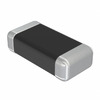 UMK316AC7475MLHTE
UMK316AC7475MLHTE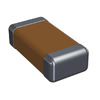 12062C562KAT2A
12062C562KAT2A CC1206JKX7RBBB103
CC1206JKX7RBBB103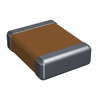 12105A821JAT2A
12105A821JAT2A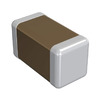 GQM1555C2D8R9WB01D
GQM1555C2D8R9WB01D GRM1886S1H7R1DZ01D
GRM1886S1H7R1DZ01D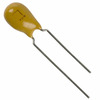 TAP154K035CRS
TAP154K035CRS TAP475M025CCS
TAP475M025CCS M4A5-256/128-12YNI
M4A5-256/128-12YNI USB3313D-GJ-TR
USB3313D-GJ-TR
- MAX882CSA+T
- P1011NSN2DFB
- MT29F1G16ABBDAH4-IT:D
- RT0402BRD071K5L
- SKY13587-378LF
- 72HFR80M
- PM1200HCF330
- T491B106M010ZTAC00
- LM77CIMMX-3/NOPB
- ADSP-21062LAB-160
- TIOL1113DMWT
- LM3S6952-IQC50-A2
- T491D107M016AT7280
- OPA2348AID
- ADUC7021BCPZ62-RL7
- AD5662ARMZ-1
- TMS320LBC57PGE80
- MAX3318ECDBR
- XC2VP40-5FF1152I
- AM29F010B-90EF
- BLF647P
- CY2291SC-221
- CY7C68300A-56PVCA
- DS90LV032AT
- HA17393AFEL-E
- K4M51163PI-BG7500
- LTC1414IGN
- ML6652CH
- PIC17C762-16I/L
- TC55B329J-12
- SH89F52F
- IRS21571STRPBF
- UPD6253GS
- TC90104AFG
- ATMXT224S-ATR
- LCMXO1200C-5TN100C-4I
- LGE4368A-LF-SA
- BCM88650B1KFSB
- VI-MU3-EQ-CC-06